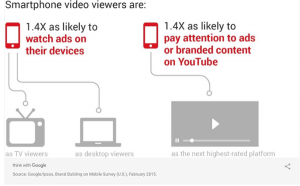
When it works, voiceover is that smart friend you can always count on. When it doesn’t, it’s that guy sitting behind you in a movie, loudly explaining all the obvious parts to his date. The problem isn’t identifying bad voiceover (we all know it when we hear it), it’s understanding its function and being committed to getting it right.
Trust Your Audience’s Ability to Understand
For better and worse, we live in an accelerated world. While this development has many advantages and disadvantages, the reality is that modern audiences have developed a keen ability to process information much more quickly than in those of the past.
Once upon a time, movies and television shows (even the great ones that we still love to watch over and over) were filled with long scenes where not a lot happens. Characters look for keys, walk out of the house to the car, get in, drive, arrive at the destination, turn off and exit the car, walk up the driveway and knock on the door, wait, entering when someone answers. You know where I’m going with this. Some forward-thinking (or bored) editor out there probably said, “An audience can fill in those logical details on their own; let’s get to a scene with more excitement or complexity.”
The same concept can be applied to your voiceover scripts.
A deliberate sequencing of thoughtful points, each reduced to its essence, can yield effective messaging. This does not mean scripts should be simultaneously stripped bare and then clogged with content. But cutting unnecessary or clichéd phrases and getting to the heart of your point is a good start.
Understand What Good Voiceover Can (and Can’t) Do
Understanding the basics of script writing and production is good knowledge to have during discussions with a writer and production company. While it is true that an outsider does not know your business and customers like you do, the best ones have the skills to translate your need into a dynamic product.
Here are some things to keep in mind:
- Writing for the ear is, generally speaking, less formal than writing for the eye. The tone should remain conversational and relatable.
- 100 words equals about one minute of screen time. Keep that benchmark in mind when estimating how much content you will need.
- Voiceover narration is a hybrid art form, incorporating both words and images. It works best when the strengths of both are used together in ways that enhance one another. In other words, don’t simply tell the audience what they’re seeing, use narration as a bridge between points or to enrich the content on the screen.
- Silence can be an effective tool to transition between ideas, signal the end of a section or let the audience absorb and reflect.
Set Clear Objectives for Your Voiceover Project
Nothing can slow down a process more (and unnecessarily eat away at a budget) than unclear goals. You should have a solid understanding of what you want to accomplish long before the engineer plugs in microphones. If you are unsure of where to start, there are plenty of resources out there (like this one) designed to guide you through the process, asking questions about your intent and helping make sense of the answers.
Feeling like you are in control of your message and informed about the process will give you the confidence to be open to pleasant surprises that can deliver your message in ways you never expected.
Care to share your best tips for killer voiceover scriptwriting? Leave us a comment below!
photo credit: IMG_4590 via photopin (license)
Digital & Social Articles on Business 2 Community(82)
Report Post




